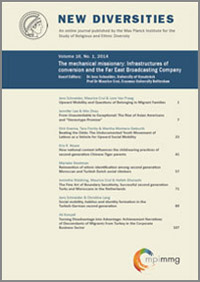Lower Migration Costs to Raise Migration’s Benefits
by Philip Martin (University of California at Davis)
To cite this article: Martin, P. (2014). Lower Migration Costs to Raise Migration’s Benefits. New Diversities, 16(2), 9–19. https://doi.org/10.58002/m1y9-bk25
Every year up to 10 million workers leave one country to work in another. Most are guest workers and enter the destination country legally, sometimes paying $1,000 or more to recruiters, governments, and other agents who facilitate their employment abroad. Helping over five million workers a year to move across borders for jobs may be a $10 billion global business, and reducing migration costs could increase remittances and speed development in the workers’ countries of origin. This may also improve worker protections, since migrant workers who arrive abroad in debt may be vulnerable to exploitation. Governments have cooperated to reduce remittance costs. They could further reduce worker-paid migration costs by implementing a wide range of policies, from negotiating free-movement regimes to sending workers abroad only via government agencies. The highest worker-paid costs arise in complex systems that involve recruiters in both sending and receiving countries. Reducing recruitment costs is an important key to ensure that migrant workers are protected. This would also increase the rate at which development occurs in migrant-sending countries.
Keywords: international labor migration, recruitment costs, recruiters
|
